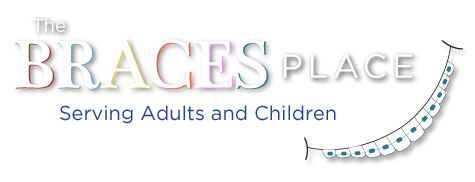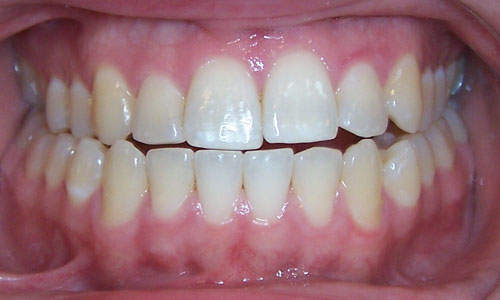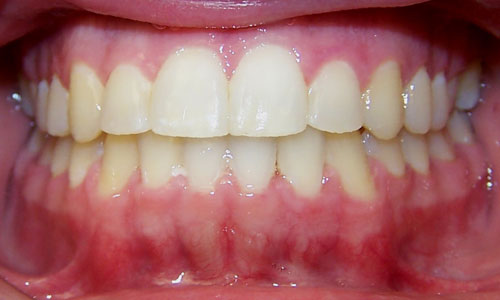INTRODUCTION TO EXTRACTION TREATMENT
While many orthodontists are quick to extract, many orthodontists avoid extraction at all costs. Both extremes are a dis-service to the patient. In fact, tailored treatment is the proper approach. Many factors are considered in developing tailored treatment.
Most patients prefer to NOT have teeth pulled. These patients look for an orthodontist that does NOT pull teeth. Unfortunately, they will find one.
Some patients have no preference and are willing to have teeth pulled without questioning the rationale. These patients sometimes have teeth pulled that need not or SHOULD NOT be removed.
The simple fact is that sometimes teeth should be pulled as the best option, and sometimes teeth should NOT be pulled as the best option. The following content should help you distinguish the difference between the two.
REASONS TO EXTRACT
BITE CORRECTION:
The ideal outcome of orthodontic treatment is NOT just a nice smile. A healthy bite is important and the most difficult thing to accomplish. Removal of teeth helps to accomplish this goal in certain circumstances.
CLASS 1 BITE:
In order to establish a proper bite, a Class 1canine needs to be established. The image to the right shows the canines in red, and shows a proper canine relationship (Class 1).
CLASS 2 BITE:
Let us consider a Class 2 bite (image to right). As you can see, the canine relationship in red is incorrect (not class 1) and the upper front teeth are too far forward (excessive overjet). The tooth in green could be considered for removal to allow the front teeth to be moved into a Class 1 relationship. This would mean that only the upper front teeth need to be moved to complete the treatment (this saves time). The nonextraction alternative would involve moving ALL the upper teeth backwards (this could be time consuming). An extraction may be a good alternative here.
CLASS 3 BITE:
Now let us consider a Class 3 bite (image to right). As you can see, the canine relationhip in red is again incorrect (not Class 1) and the upper front teeth are too far backward (insufficient overjet). The tooth in green could be considered for removal to allow the front teeth to be moved into a Class I relationship. This would mean that only the lower front teeth need to be moved to complete the treatment (this saves time). The nonextraction alternative would involve moving ALL the lower teeth backwards (or all upper teeth forwards) and would likely require a surgical movement of the jaw bone(s). An extraction may be a good alternative here.
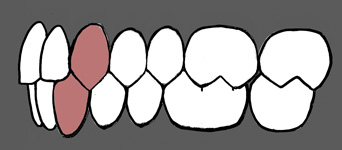
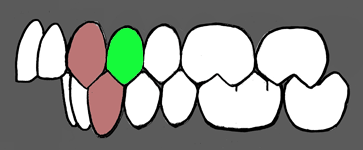
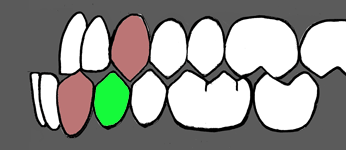
MIDLINE CORRECTION:
If a patient has a dental midline that is not in the center of their face, simply straightening teeth and providing a good bite does not address the spatial assymetry associated with the midline deviation. In such cases, extractions may help to produce symmetry. Consider the image below. The dental arch-form has been turned into a linear-form for easier comprehension. Notice that the upper and lower midlines are coincident, and that the canine relationships are good (Class I).

Now lets consider a midline deviation. In the next image, the lower midline is out of position. One might consider the removal of the tooth in green to resolve the midline deviation. Notice that this will also contribute to the correction of the Canine relationship (which is also out of place in this image).

LIP POSITION:
Teeth support lips. It should be easy to understand that the position of the lips is based on the tooth position behind the lips. Very forward teeth make for very forward lips. In such cases removal of teeth may be beneficial (though not necessary). Conversely, in patients that have good lip position to start or even lips that are too far back to start, extraction treatment could be very damaging to the facial appearance. In such cases, even when other factors suggest extraction treatment as beneficial, it may be best to avoid tooth removal in order to protect facial esthetics.
CROWDING:
Very crowded mouths often need extractions. This is not because the “mouth is too small.” Rather, it is because the “jaw bones are too small.” In such cases, it is necessary to evaluate the underlying jaw bone size to determine if there is enough room to straighten the teeth without causing bone damage (bone damage occurs when a tooth is forced outside of the bone walls, thereby damaging the bone walls). The amount of crowding is NOT the variable that decides whether to extract or not extract. It is only 1 factor to consider. If there is a substantial amount of crowding, but the bone is large enough to house the teeth, a non-extraction approach may be best (after all other extraction factors are considered).
UNHEALTHY TOOTH:
Sometimes, even if there is no need to remove a tooth for orthodontic purposes, a tooth is in such poor shape that the tooth is removed and the space is closed during the orthodontic treatment. In such cases, the patient is avoiding the added cost of fixing the tooth (or replacing it with an implant), by having the orthodontist address the problem in the midst of correcting other orthodontic problems.
REASONS TO NOT EXTRACT
LIP POSITION
As described above, lip position can be harmed by tooth extraction if the lips were in a good position prior to tooth extraction.
PHILOSOPHICAL REASONS:
Some patients are philosophically (and even emotionally) opposed to tooth removal. These patients feelings are important and represent valid reasons NOT to remove a tooth (even when tooth removal will provide the best dental outcome). These patients should simply be informed of the implications of their decision to not remove a tooth, and alternative techniques should be employed.
OTHER OPTIONS ARE MORE EFFECTIVE:
In many cases, extractions may be avoided by utilizing other treatment options. For example, orthodontic rubber bands, slenderizing, and various functional appliances (including headgear) can be utilized to avoid extractions.
SUPPORTING ARTICLES: (All evidence-based)
To Extract or Not to Extract: A diagnostic decision, not a marketing decision. S. Jack Burrow, American Journal of Orthodontics and Dentofacial Orthopedics, 2008; 341
Gianellly AA. Arch width after extraction and nonextraction treatment. Am J Orthod Dentofacial Orthop 2003; 123:25-8
Bowman SJ, Johnston LE Jr. The esthetic impact of extraction and nonextraction treatments on Caucasian patients. Angle Orthod 2000;70:3-10
Dorfman HS. Mucogingival changes resulting from mandibular incisor tooth movement. Am J Orthod 1978;74:286-297
Housley JA, Nanda RS, Currier GF, McCune DE. Stability of transverse expansion in the mandbular arch. Am J Orthod Dentofacial Orthop 2003; 124:288-93
